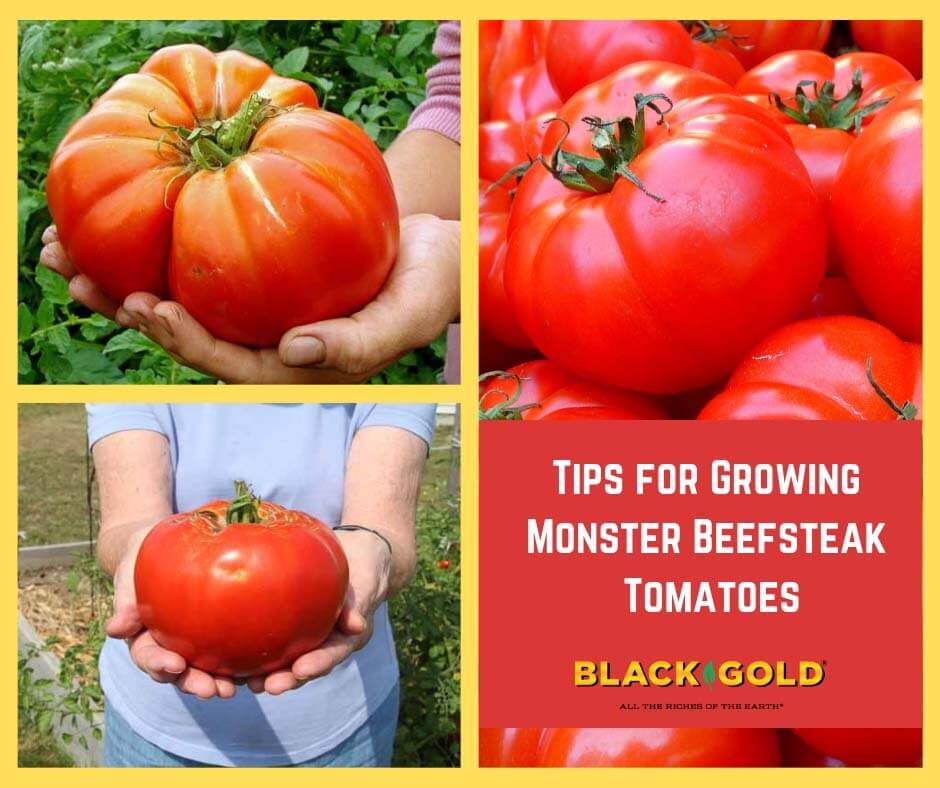
Big, beautiful beefsteak tomatoes are what every avid tomato grower wants. Large yields of monster tomatoes are not difficult to achieve if you follow a few basic tips. Good growing practices will give you enough fruits to enjoy all summer and share with your friends.
Choose Good Varieties
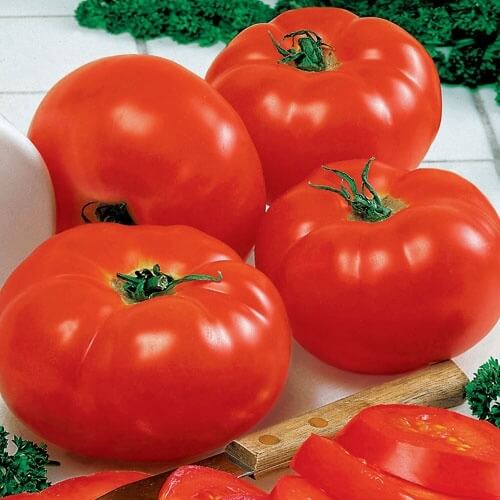
What constitutes a good variety? If you want big tomatoes, choose a beefsteak type with good flavor. Secondly, pick a high yielder. Some beefsteaks aren’t generous with fruit output, so look for the terms “high performance” or “high yielding” in the plant description. Finally, pick a disease-resistant variety. (Click here to learn more about tomato diseases and resistance.)
Tomatoes are susceptible to many serious diseases, so choosing varieties with good resistance will increase your crop. Two great disease-resistant varieties are ‘Big Beef’, a classic red-fruited 1994 All America Selections winner with superior disease resistance and 10-12 oz fruits. Another is ‘Chef’s Choice Yellow’, a flavorful, golden 2017 All America Selections winner with 10 oz fruits and great disease resistance. If you want a prolific, monster heirloom, try ‘German Johnson’, which bears pinkish-red fruits reaching 1-2 lbs, or ‘Big Rainbow’ with its super sweet, red-blushed yellow fruits that can reach 2 lbs.
Common tomato diseases are given acronyms that you might see in seed catalogs. These include bacterial speck (PST); fusarium wilt (FOL); fusarium crown & root rot (FOR); grey leaf spot (S or SS); leaf mold (FF); tobacco mosaic virus (TMV or ToMV); tomato spotted wilt virus (TSWV); tomato yellow leaf curl virus (TYLCV); and verticillium wilt (V). If you see a lot of these acronyms listed for a tomato, choose it. The more disease-resistant a variety, the better! (Click here for Cornell University’s comprehensive list of tomato diseases.)
Start Healthy
Be sure that your plants are large, green, vigorous, and healthy-looking. Leaves should be spot-free with no browning. Larger plants have more stored energy and will take off more quickly. Growing your own tomatoes from seed will usually ensure that they are disease-free. (Click here to learn how to grow tomatoes from seed.) If you don’t grow your own, seek out a reliable nursery that sells quality stock.
Time Planting
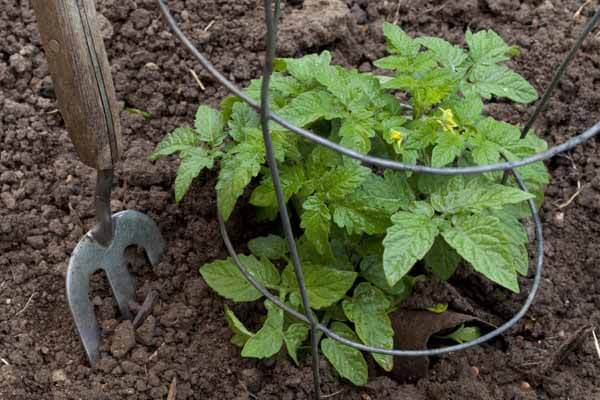
Temperatures should be warm when you plant tomatoes. Ideally, they should be at least 60 degrees F and no colder than 55 degrees F—this includes night temperatures. Some gardeners like to go the extra mile and start their tomatoes early by protecting plants with covers to ward off cold weather. Still, it is safer to plant when temperatures are warm enough.
Still, cold spells can happen. If cold weather occurs when plants just begin to fruit, it may impact fruit development. A fruit deformity called catfacing can be attributed to cold weather, in addition to excess rain and fast fruit growth. Cold snaps can also cause blossom and fruit drop.
Amend Soil
 Good soil is essential for high tomato yields. The richer and deeper the soil, the better the root development. Deep roots give tomatoes an edge during hot, dry spells. Black Gold Garden Compost Blend and Earthworm Castings are ideal amendments for tomatoes, and both are OMRI Listed for organic gardening.
Good soil is essential for high tomato yields. The richer and deeper the soil, the better the root development. Deep roots give tomatoes an edge during hot, dry spells. Black Gold Garden Compost Blend and Earthworm Castings are ideal amendments for tomatoes, and both are OMRI Listed for organic gardening.
Another tip is to berm up your soil or plant tomatoes in raised beds. Tomatoes cannot tolerate wet soils or saturated roots, so this will protect them during heavy rains, and may even reduce fruit cracking during these times.
Mulching your tomatoes with a layer of straw or compost will also ward off weeds and help support your plants through the season.
Feed, Feed, Feed
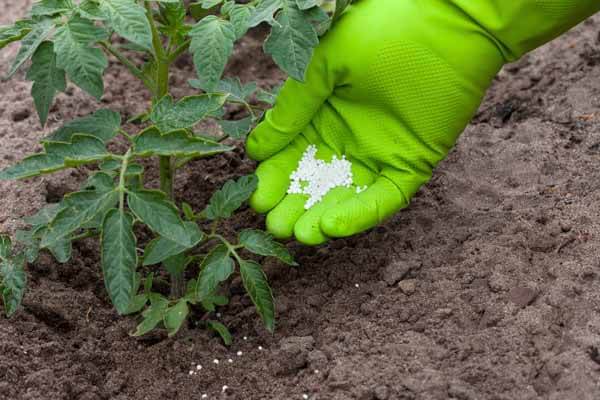
Tomatoes are aggressive feeders and require regular water when they are actively growing. Choosing the right fertilizer is essential. Food specially developed for tomato growing will encourage good fruiting and strong growth. These foods may contain balanced macronutrients (nitrogen (N), phosphorus (P), and potassium (K)), with an NPK of 10-10-10, or contain higher potassium and phosphorus for better fruiting, such as an NPK of 4-7-10. Many gardeners prefer fertilizers for better fruiting.
Good tomato fertilizer should also contain micronutrients, particularly calcium. Without ample calcium, fruits will develop a deformity called blossom end rot, where the bases of the fruits turn black.
If choosing a granular fertilizer, be sure it is slow-release to feed plants all summer. Another option is water-soluble fertilizer, but this type needs to be added regularly throughout the season. Just make sure your food is formulated for tomatoes.
Cage and Prune

Tomatoes grow as vines that continue producing fruit (indeterminate) or bush types that produce one crop (determinant). Either way, all require support to keep their fruits and foliage healthy. Otherwise, they will messily ramble across the ground, making harvest a chore and fruits easy for critters to consume.
Most beefsteak tomatoes are vining and need strong, tall cages or stakes to keep their copious stems and heavy fruits in check. Even with cages, their stems will outgrow their bounds. This is why pruning is essential. Good pruning may reduce the number of fruits, resulting in larger tomatoes. But don’t worry! A good producer will still reward you with lots of big, luscious tomatoes.
When pruning, remove wild stems that outgrow the cage. Cut them about ¼ inch from the base of the stem. If you want to train errant stems upwards, tie them to the cage with a strong fabric tie that will allow the stem to expand as it grows. It also pays to remove small, unproductive stems from the lower interior of the plant. This will increase airflow and help reduce the chance of fungal disease.
Rotate
Many tomato diseases remain in the soil. The best way to protect against this is to plant your tomatoes in a new spot each year. Giving your plants a fresh start is insurance against previous soil-borne disease problems. It also gives gardeners a chance to fortify the soil with garden plants that naturally feed the soil, like beans and peas that add much-needed nitrogen. (Click here to learn more about rotation.)
Another recommendation is to plant marigolds where you previously planted tomatoes. Tomato root-knot nematodes dislike marigolds, and research suggests that marigolds will rid garden areas of them. (Click here to read more about how marigolds help tomatoes.)
Protect
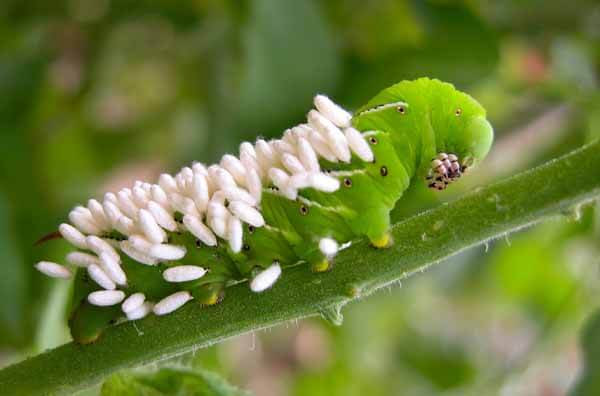
Lots of pests prey on tomatoes. The worst of these are tomato hornworms. Even though these caterpillars develop into beautiful five-spotted hawkmoths, they can devastate tomatoes by vigorously eating their leaves down to the stems. Several organic methods tackle these pests. Gardeners can simply pick off the caterpillars and kill them, but this can be messy. Organic BT dust and organic pyrethrin-based sprays will help control them. The only trouble with pyrethrins is that they also harm friendly garden insects, like butterflies, bees, ladybugs, lacewings, and praying mantis.
If you see a hornworm with white protrusions on its back, leave it alone. It has been parasitized by a tomato hornworm wasp and will not survive.
Harvest Regularly
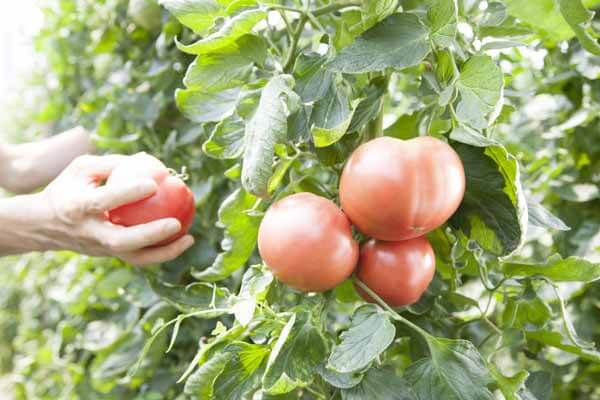
Be sure to pick all of your ripe tomatoes. This may sound silly, but happy plants produce quickly, and it’s easy to miss a few tomatoes. Those that rot on the vine or ground introduces mold and fruit flies. They also become smelly and will encourage unwanted seedlings the following year.
Once vines have stopped producing, pull them in fall to keep your garden clean and fruitful for next year. Have a bountiful tomato growing season!
